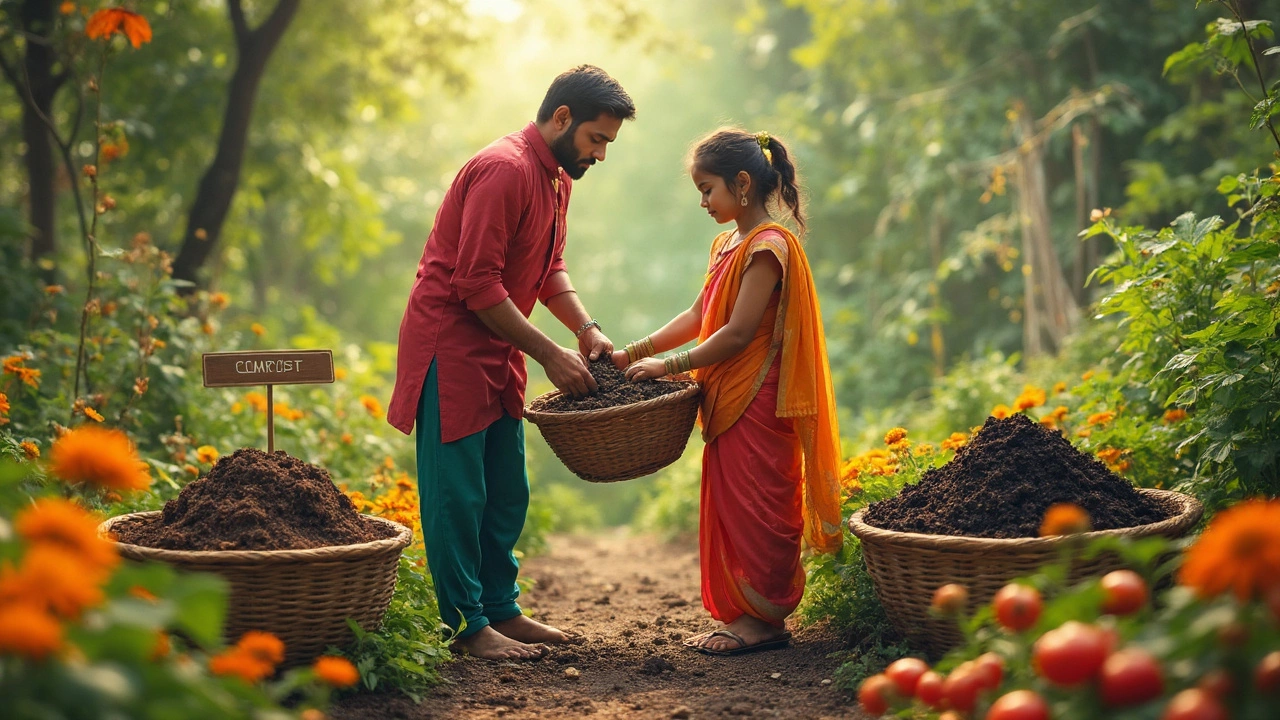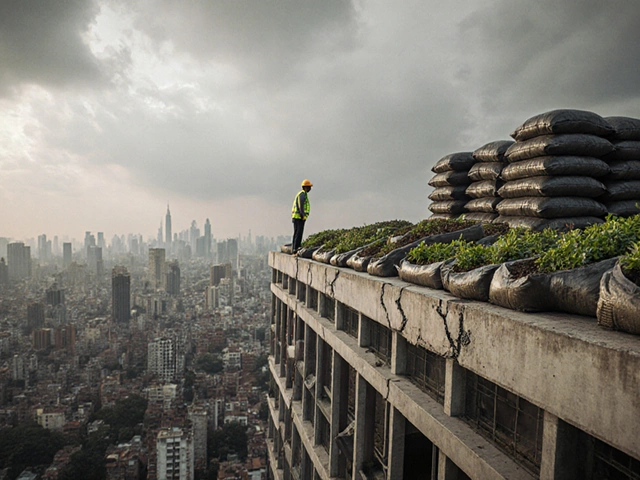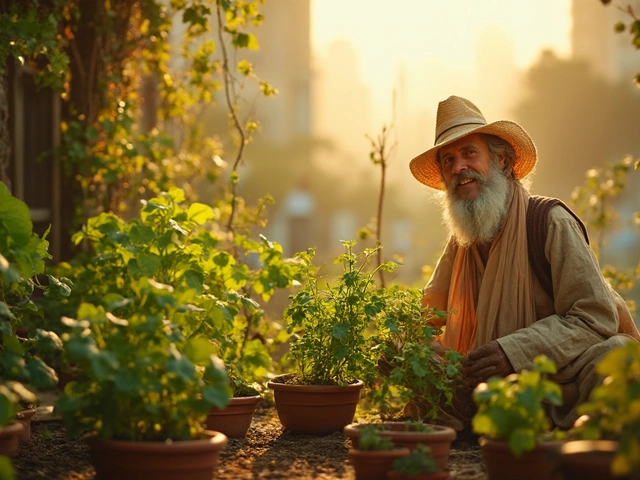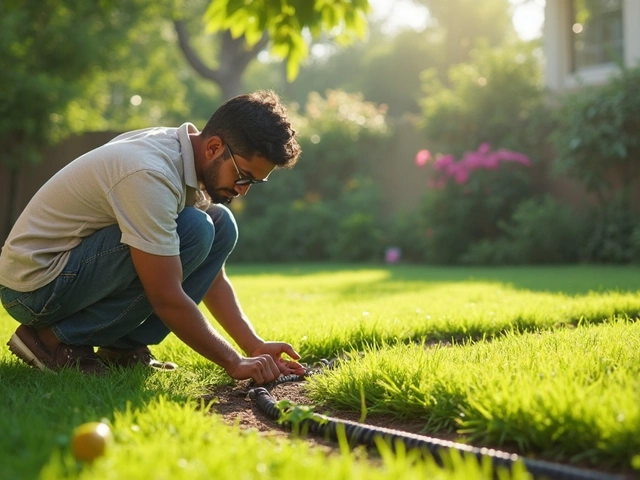If you walk into a garden center and see bags marked “compost” and “organic compost,” it just feels confusing. You’d think dirt is dirt, right? Actually, there’s a real difference hiding in those bags, and it matters more than you’d guess—especially if you care what’s getting into your homegrown veggies.
“Compost” by itself usually means decomposed stuff—like kitchen scraps, grass, maybe even random yard waste or paper. But unless the label or the company says otherwise, you have no clue what that “stuff” was in its past life. It could include lawn clippings loaded with weed killer, or bits of cardboard with old ink on it. That doesn’t bother everyone, but if you’re all about clean eating or growing veggies for your family, it should.
So what turns regular compost into organic compost? Simple: it’s all about the source. For something to be organic, it needs to come from plants or animals raised without synthetic chemicals, pesticides, or weird additives. Not every bag that says “organic” is perfectly pure, but if it’s got a certification—like USDA Organic on the label—it’s met some strict standards. That means you get compost made only from organic inputs, not just any discarded leaf or food scrap.
- What Is Regular Compost, Anyway?
- Breaking Down Organic Compost
- How the Ingredients Make All the Difference
- Why Labels and Rules Actually Matter
- Tips for Better Compost at Home
- Which One Should You Use?
What Is Regular Compost, Anyway?
Regular compost is what most people think of when they hear the word “compost”—basically, a heap or pile of rotting stuff from your house and yard. It’s made up of anything biodegradable: think food scraps, coffee grounds, shredded newspaper, leaves, grass clippings, even old egg cartons. People love it because it breaks down into rich, dark material that packs the soil with nutrients and helps plants grow bigger and healthier.
Making regular compost is pretty simple. You toss in your waste, add a little water, turn the pile occasionally, and let Mother Nature do her thing. No complicated rules. But here’s what people don’t always realize: regular compost is kind of a wildcard. Most folks don’t pay much attention to what goes into the pile. Lawn clippings sprayed with chemicals, food scraps from non-organic produce, old bits of colored paper—all that can end up there. That stuff will still rot, but it might leave behind traces you wouldn’t want near your tomatoes.
Typical ingredients in regular compost:
- Fruit and veggie peels (even if non-organic)
- Tea bags and coffee grounds
- Yard trimmings (even if treated with weed killers)
- Paper and cardboard (sometimes with ink or dyes)
- Non-meat kitchen scraps
Most community compost bins and city programs don’t filter out these things unless they’re labeled “organic only.” This is why the quality and safety of regular compost can widely vary. Some piles are super clean, others might carry small traces of pesticides or junk from packaging.
Why do people still use regular compost? It’s easy, cheap, and does the trick for most lawns and non-edible landscaping. But if you’re aiming for pure, chemical-free gardening, you’ll want to know what goes in before you spread it around your carrots or lettuce.
| Item | Possible Chemical Exposure |
|---|---|
| Lawn clippings | Pesticides, Herbicides |
| Fruit/veggie scraps | Pesticides (if non-organic) |
| Shredded newspaper | Ink, Dyes |
| Cardboard | Ink, Adhesives |
| Yard waste | Fertilizers, Weed Killers |
The takeaway: regular compost can work wonders for your soil, but unless you control every ingredient, you may not always know what you’re getting. If you just want to improve your flower beds, it’s probably fine. But for veggie gardens, having control over what goes in makes a real difference.
Oh, and one more thing: you’ll see the word compost used everywhere, but rarely do people stop to ask what actually went into it. Always ask if you care about what’s in your food.
Breaking Down Organic Compost
So, what’s really in a bag of organic compost? It isn’t just random decomposed stuff. Organic compost is made only from materials that were organically grown or raised. That means the yard trimmings, fruit and veggie scraps, and manure all came from sources that never used chemical fertilizers, pest sprays, or any sketchy additives. This is what sets organic compost apart from the basic pile of old leaves behind the shed.
To actually earn the “organic” label in most countries, especially in the U.S., companies have to follow strict rules. These rules are written out by groups like the USDA, and they even check on-site sometimes. If you see compost with a real organic certification—like "USDA Organic"—they’ve proven their stuff is clean all the way from start to finish. If it just says “organic” but doesn’t have a trusted seal, you might want to double check with the seller.
Here’s the cool part: organic compost isn’t just good for your garden because of what it has; it’s good for what it skips. No leftover lawn chemicals or weird plastic bits. You also get richer soil that holds water better and is packed with more healthy microbes and nutrients. Studies show that using organic compost can boost vegetable yields by as much as 20% compared to using none at all. Plus, fewer bad bugs seem to show up in soil treated with organic compost, likely because the soil’s just healthier and more balanced.
- Only organic waste—no chemicals allowed
- Certification is a must for store-bought compost
- Boosts soil structure and water holding
- Supports healthy microbe activity
- Helps plants fight off some pests naturally
| Compost Type | Main Ingredients | Chemical-Free? | Certification |
|---|---|---|---|
| Regular Compost | Mixed yard waste, kitchen scraps, could be treated or untreated | No guarantees | Rare |
| Organic Compost | Organic plant/animal waste only | Yes | USDA, OMRI, etc. |
If you’re making organic compost at home, you’ll want to keep things just as clean. Only toss in scraps from certified organic veggies and fruits, leaves that weren’t sprayed with anything, and manure from animals that weren’t fed hormones or antibiotics. Don’t be surprised if your pile takes a little longer to break down—organic matter can be a bit chunkier—but the payoff is pure, top-notch compost for your garden beds.
How the Ingredients Make All the Difference
Compost is only as good as the stuff you toss into it. If you’re loading up your pile with grass treated with weed killers or throwing in old non-organic veggies, you’ll get a mix that’s unpredictable. That unpredictability is really what separates regular compost from organic compost—it comes down to what goes in from day one.
Organic compost is built from materials that meet certified organic standards. That means the food scraps, manure, leaves, and straw all have to come from sources that never used synthetic fertilizers, pesticides, or genetically modified seeds. In contrast, regular compost can have pretty much anything: chemically treated lawn clippings, food leftovers with preservatives, even little bits of plastic or metal if you’re not careful. Nobody checks what goes in unless you do.
Here’s a quick comparison to show the key ingredient differences:
| Material | Regular Compost | Organic Compost |
|---|---|---|
| Vegetable Scraps | Any source, may have pesticides | Certified organic only |
| Grass Clippings | Possible herbicides/fertilizer | No chemical treatment, organic certified |
| Animal Manure | Any farm source, maybe with antibiotics | From animals fed organic feed, no antibiotics |
| Paper/Cardboard | May contain ink, chemicals | Unbleached, chemical-free, or recycled from organic sources |
Using the right ingredients pays off. Research from the Rodale Institute (they’ve been studying organic farms since the 1940s) shows that soils enriched with organic compost hold more water and have way more earthworms and healthy bacteria. In one test, organic compost boosted soil microbes by over 30% compared to heaps using treated grass and regular store-bought produce.
If you want your compost to be truly organic at home, keep a sharp eye on what scraps and garden waste go in. Avoid grass that’s been sprayed with anything sketchy, skip the waxy stickers on fruit peels, and make sure paper products are plain and chemical-free. If you’re buying compost, check for organic certification—otherwise, you have no clue what you’re really getting.

Why Labels and Rules Actually Matter
Ever wonder if those “organic” claims on a compost bag are legit or just marketing talk? Turns out, the label isn’t just for show—it actually means there are stricter rules at work. When a product has an organic certification, it’s had to jump through way more hoops than regular compost. That means actual inspections, documented ingredient lists, and proof the stuff inside was made without weird chemicals or leftovers from treated lawns.
If you spot a certified organic seal (like the USDA Organic label), that means the product’s ingredients are at least 95% organic. For compost, it means all plant and animal stuff must come from organic sources—no synthetic fertilizers, pesticides, or sketchy “biosolids” (which is a nice way of saying sewage sludge). They check to be sure everything breaks down naturally, not with chemical boosters. Here’s a quick breakdown of what gets checked before compost can call itself organic:
- Source: Only organic-certified plant and animal material used
- No synthetic pesticides, herbicides, or fertilizers allowed
- No genetically modified organisms (GMOs)
- Must follow strict production and handling standards
- Regular inspections and paperwork for traceability
It isn’t just about feel-good marketing. Some gardeners actually want organic compost because studies show even low levels of toxic stuff (like persistent herbicides or heavy metals) can linger in regular compost and mess with delicate plants or food crops. Here’s a table showing what’s allowed and banned between regular and certified organic compost:
| Ingredient/Practice | Regular Compost | Organic Compost |
|---|---|---|
| Herbicide-Treated Grass | Allowed | Not Allowed |
| Kitchen Scraps (Unknown Source) | Allowed | Only from organic kitchens |
| Sewage Sludge | Allowed in some cases | Never allowed |
| Pesticides/Fertilizers | Possible residue | Not allowed |
| GMOs | Possible | Not allowed |
So why bother with organic compost at all? If you want to grow vegetables with the cleanest input possible, or sell at a farmer’s market with strict rules, you basically need the organic label. Plus, anyone trying to keep their soil truly chemical-free gets peace of mind. The label tells you someone actually checked what’s inside—and that makes a real difference in the garden and on the dinner plate.
Tips for Better Compost at Home
If you want your compost to actually help your plants, you’ve got to do it right. It’s easy to toss scraps in a pile and forget about them, but getting rich, crumbly compost that smells earthy (never gross!) takes a little know-how. Here’s what’s proven to work best:
- Mix your greens and browns: Greens, like veggie peels, coffee grounds, or fresh grass clippings, are loaded with nitrogen. Browns—think dry leaves, cardboard, or straw—bring carbon. A roughly 1:3 ratio of greens to browns helps keep everything breaking down without turning slimy or stinky.
- Chop it smaller: The smaller your scraps, the faster they cook down. Tear leaves, shred paper, and cut up bigger veggie chunks to speed things along.
- Keep it moist (but not soggy): Water your pile if it’s dry to the touch. Too much moisture and you’ll get a swampy mess, so aim for the dampness of a wrung-out sponge.
- Turn it up: A quick flip with a shovel or compost fork every week keeps air flowing and prevents rot. Good airflow means happy microbes.
- Mind what you toss in: Skip meat, dairy, greasy food, and anything treated with pesticides if you’re aiming for organic compost. These items attract pests or can mess with good bacteria.
If you’re curious how tweaking your pile changes the outcome, check out this simple breakdown:
| Factor | What Works Best | Why |
|---|---|---|
| Greens/Browns Ratio | 1:3 | Reduces odor, breaks down faster |
| Moisture | Damp, not wet | Fuels microbes but avoids mold |
| Turning Frequency | Every 1-2 weeks | Adds oxygen, prevents slow spots |
| Compost Particle Size | Small pieces | Decomposes far quicker |
Bonus tip: If you’re after true organic compost, make sure your inputs come from gardens or kitchens that skip chemical sprays. It’s tempting to add free grass clippings from the neighbors, but if their lawn is treated, so is your pile. It’s worth asking around—or just stick to scraps you trust.
Watch your pile’s progress. If it heats up inside (some piles can get over 140°F!), your microbes are throwing a compost party, which means faster, cleaner results. And if you ever get worms invading your pile? That’s a win—they speed things along and add good stuff your plants love.
Which One Should You Use?
So what’s the best pick for your garden? If you’re just growing ornamental plants, regular compost usually does the job. Flowers, lawns, and shrubs aren’t picky, and standard compost is loaded with nutrients. But food gardens or anything you plan to eat—now that’s where you want to pay attention to what’s in your soil.
Organic compost really shines for vegetable gardens, fruit trees, and raising herbs, especially if you’re trying to keep things as clean and chemical-free as possible. If you have kids playing in the dirt, pets who snack on grass, or if you sell your garden produce, organic compost is the safest choice. Certified organic compost is less likely to contain pesticide residues or heavy metals, which sometimes sneak into regular compost from treated wood chips or yard clippings sprayed with weed killer.
Check out this quick side-by-side break-down:
| Type | Best For | Risks/Concerns | Price (avg. USD/40 lbs) |
|---|---|---|---|
| Regular Compost | Lawns, ornamentals, non-edible plants | Possible chemical/pesticide/fertilizer traces | $4–$7 |
| Organic compost | Vegetable gardens, fruit trees, herbs, anywhere pets/kids play | Usually free of synthetic chemicals and lower risk of contamination | $6–$12 |
Notice that organic compost costs a bit more. Is the price worth it? For edible gardens, most folks (myself included) think it’s a fair trade for peace of mind. If you’re DIY’ing compost and want the organic benefits, just watch what you toss in—no chemically treated grass, no painted wood, and definitely no non-organic food scraps.
- If your main goal is safe, clean food, go organic all the way—store-bought or homemade.
- If you’re on a tight budget or only growing flowers, regular compost is perfectly fine.
- Mix it up: Use organic compost in veggie beds and save regular compost for the lawn or front yard plants.
Bottom line: Match the compost to what you’re growing and who will be hanging out in that dirt. Your garden (and maybe your dinner plate) will thank you.





